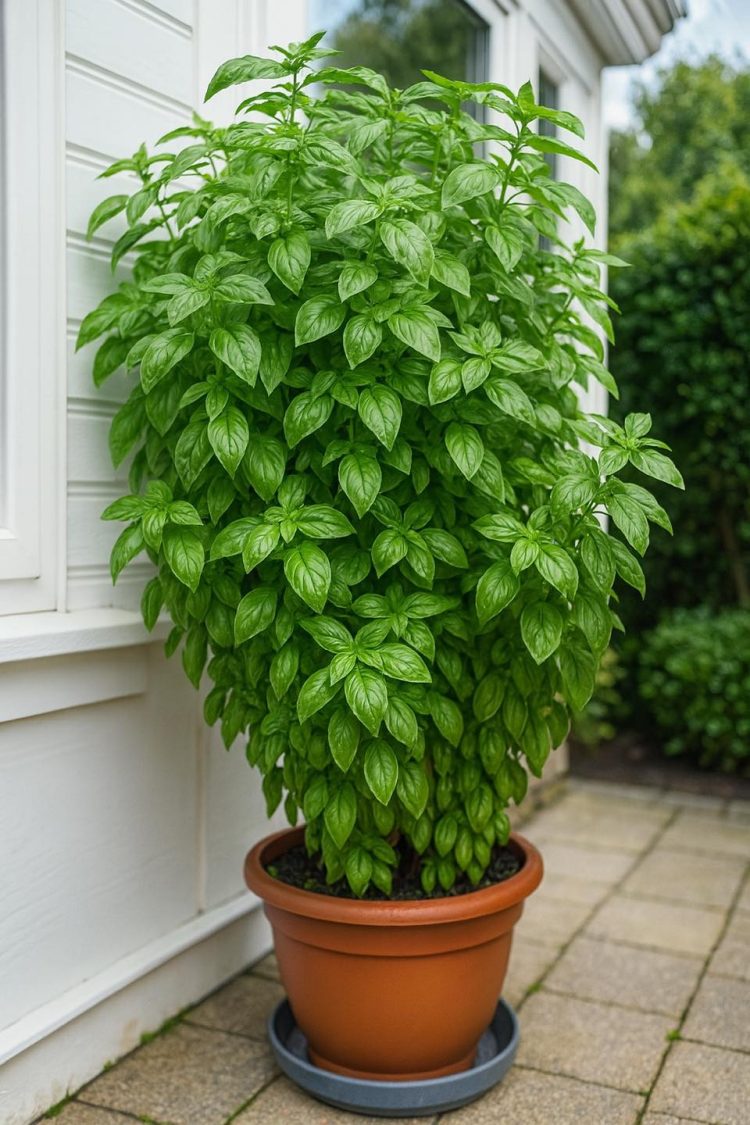Basil is one of the most rewarding herbs to grow in containers, offering an abundance of fresh, fragrant leaves that can be used in countless culinary dishes.
Whether you have a sunny windowsill, balcony, or patio, growing big, healthy basil in a pot is entirely achievable—even for beginners.
With the right care, basil can thrive in containers and provide a generous harvest throughout the growing season.
In this step-by-step guide, you’ll learn exactly how to grow lush, bushy basil in pots, from choosing the right variety to harvesting for maximum yield.
Why Grow Basil in a Pot?
Container gardening offers several advantages for growing basil:
Mobility: You can move pots to catch the best sunlight or bring them indoors in cool weather.
Control: Pots allow for better soil control, drainage, and moisture management.
Accessibility: Perfect for small spaces like balconies, patios, or kitchen counters.
Basil grows quickly and thrives in warm weather, making it a perfect candidate for potted cultivation. With the right setup, you can enjoy large, healthy basil plants in just a few weeks.
Step 1: Choose the Right Basil Variety
There are many basil varieties, and some are better suited for containers than others.
For large, flavorful leaves and vigorous growth, consider the following types:
Genovese Basil: Classic Italian basil with large, aromatic leaves.
Sweet Basil: A popular variety for pesto and cooking.
Lettuce Leaf Basil: Broad, crinkled leaves and mild flavor.
Spicy Globe Basil: Compact, round plant ideal for smaller pots.
Thai Basil: Strong, licorice-like flavor with purple stems.
For growing big basil in pots, Genovese and Sweet Basil are top choices due to their size and productivity.
Step 2: Select the Right Container
Basil develops a moderate root system, so it needs room to grow. A container that is too small will stunt growth and limit leaf production.
Container size: Use a pot that is at least 10–12 inches deep and 8–12 inches wide per plant.
Material: Terracotta, ceramic, or plastic pots are all suitable, but ensure they have drainage holes.
Drainage: Good drainage is essential. Avoid containers without holes, or root rot can occur.
If you’re growing multiple plants, use a larger planter box or separate individual pots to give each plant adequate space.
Step 3: Use the Best Soil for Basil
Basil needs loose, nutrient-rich soil that drains well while retaining moisture. Regular garden soil is too heavy for container gardening.
Soil mix: Use a high-quality potting mix that contains peat moss or coco coir, perlite, and compost.
pH range: Basil prefers slightly acidic to neutral soil (pH 6.0–7.0).
Nutrients: Mix in organic compost or a balanced slow-release fertilizer to support early growth.
Avoid compacted or clay-based soils, which retain too much moisture and reduce root aeration.
Step 4: Plant Basil Properly
You can grow basil from seeds or starter transplants from a nursery. Both methods work well in containers.
From seed:
Fill the pot with moist potting mix.
Sow seeds ¼ inch deep, spacing them about 3 inches apart.
Lightly cover with soil and mist to keep moist.
Basil seeds germinate in 5–10 days when temperatures are between 70–85°F.
From transplant:
Gently remove the basil plant from its nursery pot.
Loosen roots and plant in the container at the same depth it was growing.
Firm the soil and water well after planting.
Always place the container in a sunny spot immediately after planting.
Step 5: Provide Full Sunlight
Basil loves heat and thrives in full sun. The more light it receives, the bushier and more productive it will become.
Sun requirements: Provide 6–8 hours of direct sunlight daily.
Indoors: Place pots near a south-facing window or use a grow light for 12–14 hours per day.
Outdoors: Place the container in a sunny, sheltered location protected from strong wind.
If your basil appears leggy or pale, it’s likely not getting enough light.
Step 6: Water Consistently and Correctly
see continuation on next page
